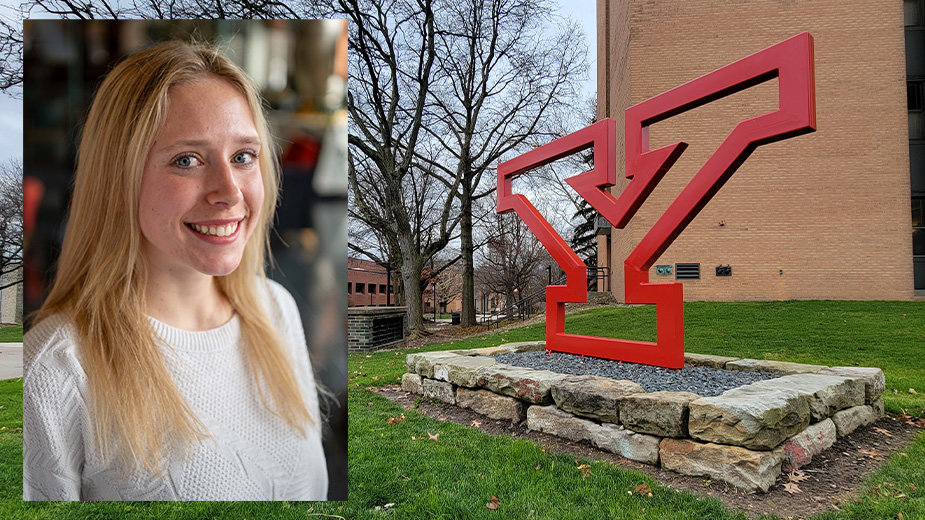Collaboration Is a Boon for Workforce Development
YOUNGSTOWN, Ohio — With multimillion-dollar federal and state grants feeding into workforce development programs, regional agencies – and the small businesses they serve – are reaping the benefits of collaborating across county and state lines.
Among the most recent get: a $2.5 million workforce development grant awarded in October through the U.S. Department of Labor to the Mahoning Valley Manufacturers Coalition and the West Central Job Partnership in Pennsylvania. The monies will go toward the RS4 project, or Replicating, Scaling and Sustaining Sector Driven Successes in the Greater Oh-Penn Region, says Jessica Borza, MVMC executive director.
The joint effort received one of 18 grants throughout the United States, and was one of three to receive the maximum amount of $2.5 million. The grants targeted Appalachian areas as well as the eight-state Mississippi Delta region.
“We consider ourselves to be very fortunate,” Borza says. “When we were considering the grant, we realized this might be an opportunity for us to take to scale some practices that are showing great promise within our interstate region.”
As a single organization, applying for and receiving federal grant dollars isn’t easy, Borza says. However, working through the Oh-Penn Interstate Region “has been one of the most effective strategies in attracting funding” because it allows organizations like the MVMC and West Central Job Partnership to differentiate themselves and be competitive on the national level, she says.
“We’re really pushing the envelope and taking some innovative approaches.”
The grant is one example of how interstate collaboration helps smaller organizations compete for big grant dollars. Collaboration was a topic of discussion during the Rising Rust Belt regional revitalization summit in October. Borza joined Carol Kilko, deputy secretary for business financing for the Pennsylvania Department of Community and Economic Development, to discuss the benefits of collaboration.
The panel discussion was moderated by Eric Karmacy, operations and special projects division chief with the West Central Job Partnership. To be effective in their efforts, workforce development and economic development practitioners often find themselves venturing beyond their geographic boundaries, said Karmecy, who has worked with Borza and Kilko on a number of projects in Pennsylvania and Ohio.
“Workforce development is not a practice that, to be done effectively, should be confined to county borders or state borders,” Karmecy said.
Collaborations such as the Tri-State Shale Coalition and the Tri-State Energy and Advanced Manufacturing Coalition, or TEAM, connect elected officials, workforce development agencies and educators in western Pennsylvania, eastern Ohio and northern West Virginia, Kilko said.
Formed in 2018, TEAM aligns educational resources with workforce training needs in the industries of energy, petrochemicals and advanced manufacturing industries in those states. In October 2018, TEAM received more than $1 million in funding from the Appalachian Regional Commission in Washington, D.C., Chevron Corp. and the Claude Worthington Benedum Foundation, plus $597,894 of in-kind matches from 10 educational partners over three years.
Today, 10 community colleges within the tri-state footprint are considering a memorandum of understanding to identify core competencies for the energy industry workforce, she adds.
“These are the kinds of things that we absolutely need to see happen,” she says. “I think it’s just the beginning of things that need to be done on a regional and a tri-state area.”
Regional initiatives are in line with workforce development priorities identified by The Brookings Institution in its white paper, “Talent-driven Economic Development: A new vision and agenda for regional and state economies,” published in October.
In the report, the institute concludes that development pathways are “too unclear and unequal, limiting the supply of prepared workers.” Further, hiring by the private sector undermines “inclusive talent development and deployment.”
Among the priorities Brookings identified are developing and disseminating new skills-based hiring tools for more efficient and equitable hiring practices, and targeting economic development incentives toward “opportunity-rich business practices” to build local talent pipelines.
The MVMC and West Central Job Partnership look to use funding from the Department of Labor grant to boost innovative apprenticeships in the Oh-Penn Interstate Region, which includes six counties in Ohio and eight in Pennsylvania. Efforts will focus on two talent pipelines – one at the high school level and one at the adult level.
For high school students, pre-apprenticeship programs intentionally pair juniors and seniors with area employers “who are committed to providing full apprenticeship programs,” Borza says. Companies keep in touch with the students during their senior year to hire them after they graduate.
“These young people will now have a leg up in their apprenticeship program,” she says. “And because it’s competency-based, they can accelerate their apprenticeship and already be a fair way along their career path.”
About 90% of the students in the pre-apprenticeship program earn work experience in the time between their junior and senior years of high school, and a large percentage of them continue to work weekends during the school year. A few even go back to work during the winter break, Borza says. The program has registered 217 new apprentices and boasts a 94% retention rate, she reports.
The grant also boosts the WorkAdvance program for adults who might be working low-income jobs and haven’t otherwise considered manufacturing because they don’t have time to pursue the training, nor do they understand how to get a job in manufacturing, Borza says.
MVMC works to identify needs and solutions through sector partnerships with employers from a common industry. Though they are competitors, “probably about 80% of their needs are similar,” Borza says. “It makes them part of the solution.” The partnerships define clear pathways and identify needed skills for prospects to get a job while providing and promoting opportunities for advancement among existing employees, she says.
“I think conversations like that are what’s going to make companies competitive in this kind of labor market,” Borza says.
Accelerated apprenticeship models that focus on an individual’s competency in lieu of traditional time-based apprenticeships benefit individuals who may already bring skills to the table, as well as quick learners who move through the training quickly, allowing them to advance without needing a set number of apprenticeship hours, Borza says.
Pairing that with the talks with employers is critical for attracting prospects to regional companies and retaining them by providing opportunities for advancement, she says.
“The two are very much related,” she says. “Especially as we see new generations entering the workforce, we know that they are interested in a good paying job with benefits and work/life balance, but they’re also very interested in making sure that they’re selecting a company that is not a dead-end job.”
Similarly in Pennsylvania, workforce development agencies have made a slight change to the commonwealth’s cluster partnerships, which for years had been driven by government, service providers and educational institutions, Kilko said. The “next-generation industry partnerships” are being “completely led by the private sector,” she said. While service providers are still at the table, industries and businesses work toward implementation.
“Programs, they come and they go,” Kilko said. “And why do they come? Because there’s funding. Why do they go? Because there isn’t any funding left. And for us to be able to sustain these kinds of partnerships, there has to be relevancy to the private sector.”
Copyright 2024 The Business Journal, Youngstown, Ohio.



